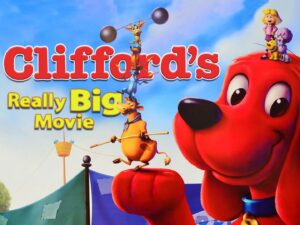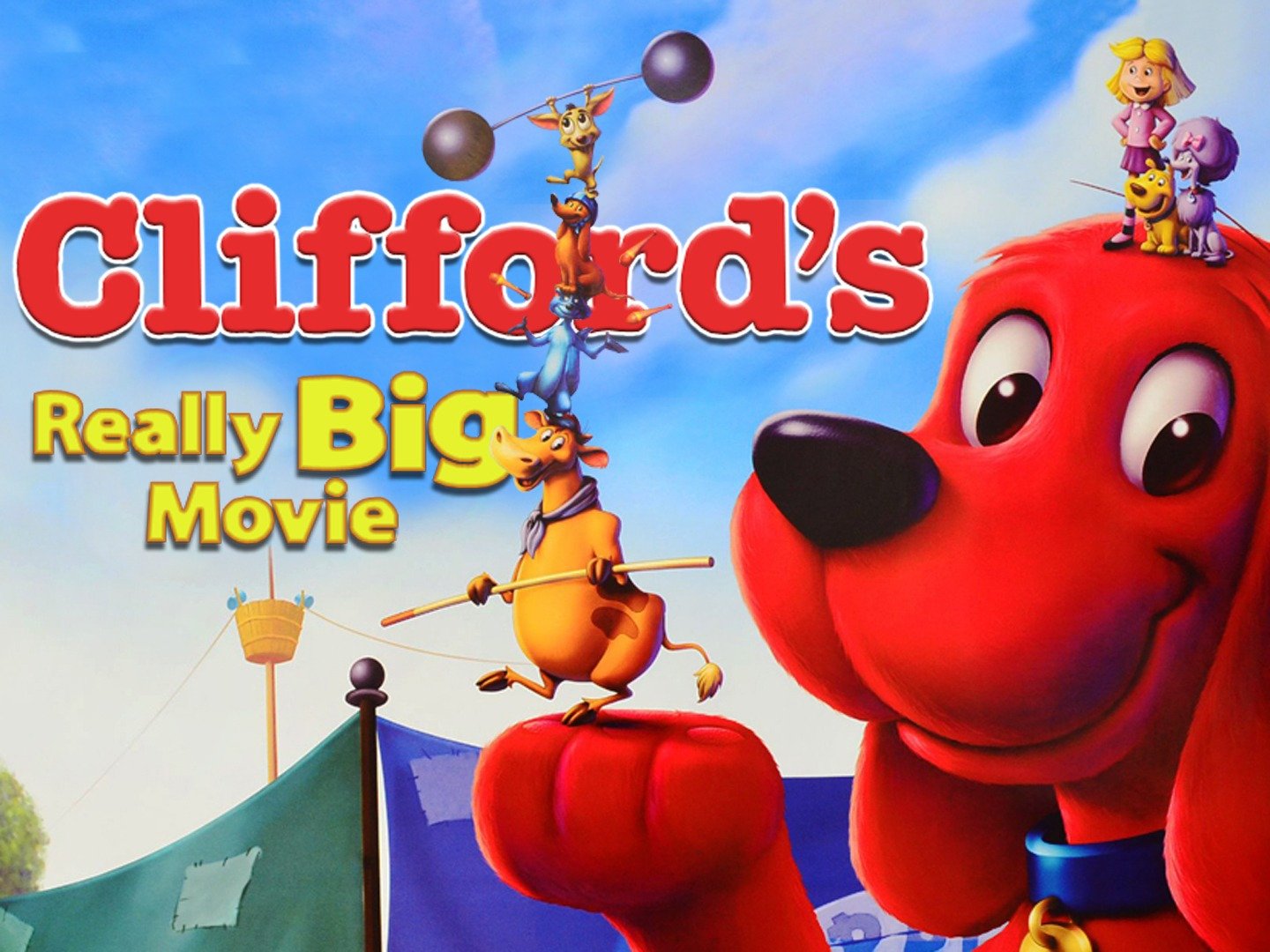Clifford’s Really Big Movie
Posted on April 17, 2004 at 9:53 am
B| Lowest Recommended Age: | Preschool |
| MPAA Rating: | Rated G |
| Profanity: | None |
| Alcohol/ Drugs: | None |
| Violence/ Scariness: | None |
| Diversity Issues: | Diverse characters |
| Date Released to Theaters: | April 23, 2004 |
| Date Released to DVD: | July 3, 2004 |

Clifford is not just a Big Red Dog; he’s a big, red phenomenon, hero of a series of books by Norman Bridwell, an animated PBS series, and even a live road show. Now he has moved (briefly) to the big screen with a low-key feature destined for a quick theatrical release on its way to video and DVD.
Clifford is a really, really big red dog, part of his appeal to toddlers, who live among giants and are thus drawn to huge, powerful but kind creatures who love children (like Barney). Children also like the way that Clifford explores the world around him, learning gentle lessons about getting along with others and solving problems like finding lost toys and not being afraid of a storm.
Clifford (voice of the late John Ritter in his last role) lives with Emily Elizabeth and her family on dogbone-shaped Birdwell Island. His best dog friends are T-Bone (voice of Kel Mitchell) and Cleo (voice of Cree Summer). When Clifford overhears Emily Elizabeth’s parents talk to a neighbor about how much he eats, Clifford thinks he is too much of a burden for the family and decides that he, T-Bone, and Cleo should join an animal act and compete for a prize of a lifetime supply of pet Tummy Yummies.
The animal act includes a trapeze artist ferret named Shackelford (voice of Wayne Brady) and a tightrope-walking cow named Dorothy (voice of Jenna Elfman). They are managed by Larry (voice of Judge Reinhold), who loves them very much but has not been able to make the act successful. Their only chance is to win that contest. But, Shackelford says, in order to do that, they need something big. Enter Clifford.
As soon as Clifford and his friends arrive, the act comes together and audiences love it. But Shackelford gets jealous of all the attention Clifford is getting. The daughter of George Wolfsbottom (voice of John Goodman), the wealthy man who owns the Tummy Yummies company, wants Clifford to be her pet. And Emily Elizabeth misses her beloved Clifford, and he misses her, too. Fortunately, everyone in this movie is kind and understanding and loyal, though it takes some longer to get there than others.
The limited animation style looks static on the big screen and the movie is too long for its age group even at 75 minutes. (Actually, I felt it was too long for my age group, too.) The children at the screening I attended fidgeted during the musical numbers and some seemed uncomfortable with even the mild tension in the story. The story itself is questionable, with Clifford and his friends leaving home without thinking about how upsetting that will be for their families. The song lyrics justifying it were downright unsettling at times; it cannot be wise to sing to children about how “You’ve got to be lost if you want to be found….It only gets better after it gets worst, happy ever after needs the scary part first.” It’s fine to let children know that problems can be solved, but this suggests that they cannot be happy unless they make sure something bad happens first.
Parents should know that there is some mild peril and some emotional tension. Some children may be upset when Clifford and his friends leave home or when the dogs lie about not having owners.
Families who see this movie should talk about how Clifford got the wrong idea by hearing only part of what Emily Elizabeth’s parents said about him. What should he have done instead of leaving? Make sure children know that it is never all right for anyone to leave home without talking to the family about what is wrong. Families should also talk about the lie the dogs tell about their dog tags, and about Dorothy’s saying that Shackleford is “not the most secure ferret in the world, but he means well.” Why does Mr. Wolfsbottom’s daughter want to have the biggest of everything? What does it mean to say that “okay does not dazzle?”
Families who enjoy this movie will enjoy the Clifford books and videos. They will also enjoy the books and video starring Lyle, Lyle Crocodile, especially the animated version, which has outstanding songs and voice talent. And they might like to try to make snickerdoodles, the cookies Dorothy and Cleo promise to make together.

